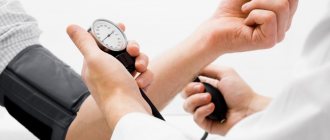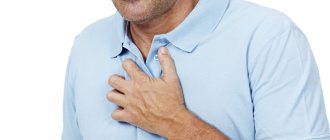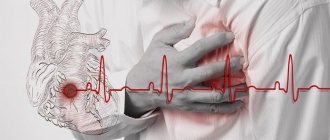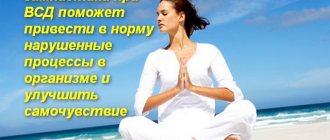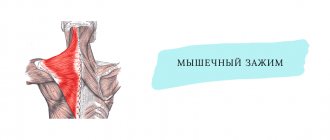Drug therapy for vegetative-vascular dystonia is ineffective because autonomic dysfunction occurs for various reasons and is manifested by many symptoms.
At the Yusupov Hospital, neurologists stop an attack of VSD with the help of individually selected medications. Therapy for vegetative-vascular dystonia begins with non-drug treatment methods. Treatment of VSD is carried out using modern physiotherapeutic procedures. After the vegetative crisis subsides, VSD can be treated with Almag. This is a magnetotherapy device that operates with a traveling pulsed magnetic field. It helps normalize the functions of the central nervous and cardiovascular systems. At home, it is permissible to use aromatherapy for vegetative-vascular dystonia.
Therapeutic exercise (physical therapy) for VSD
Dosed physical activity, running, and exercise during VSD help stabilize the function of the autonomic nervous system. Breathing exercises help quickly cope with an attack of suffocation. A contrast shower stabilizes blood vessels and helps normalize blood pressure. Rehabilitation clinic specialists draw up an individual program for restoring impaired functions in VSD.
Rehabilitation specialists at the Yusupov Hospital individually select exercises depending on the type of VSD. Vegetative-vascular dystonia of the hypertensive type is manifested by an increase in blood pressure. The therapeutic effect of physical exercises in the hypertensive form of VSD is due to their beneficial tonic effect on the central nervous system. Systematic training increases the tone of the parasympathetic system and improves the humoral regulation of blood pressure.
Patients begin training immediately after diagnosis. General developmental exercises are used for all muscle groups, including small muscles in the distal parts of the limbs. Special exercises in voluntary muscle relaxation, breathing exercises, as well as exercises for the vestibular apparatus give a more pronounced effect in lowering blood pressure and normalizing impaired vestibular function. Performing exercises also has characteristic features.
Exercises are performed under the guidance of a senior instructor-methodologist of exercise therapy. They should be done with full amplitude, freely, without tension, holding your breath or straining. At the beginning of the course, the number of exercises alternates with changes in the position of the body. Physical exercises are used alternately for different muscles. After difficult exercises, patients perform easier ones.
Muscle relaxation exercises help reduce the tone of skeletal muscles and blood vessels, relieve excitation of the vasomotor center, which leads to a decrease in blood pressure. Breathing exercises for VSD are performed with lengthening the exhalation. In order for the patient to better understand them, the instructor first teaches him diaphragmatic and diaphragmatic-thoracic breathing, then teaches him to combine breathing with various movements.
Rehabilitation specialists recommend that patients visit the pool during VSD. Swimming allows the patient to relax, have fun and improve their mood. For exercises in water, rehabilitators select exercises that are made easier due to the buoyant force of water. Immersion in water creates additional stress on the respiratory muscles during inhalation, and exhalation of water during the exhalation phase.
Fitness for hypertensive type of VSD
This type of VSD is characterized by excessive vascular tone and high blood pressure (more than 140/90 mm Hg). If this condition is not controlled, it can develop into hypertension. A person is worried about fatigue, headaches and palpitations. In contrast to ordinary hypertension, numerous signs of vascular disorders appear: redness of the face and neck, “marbled” coloring of the skin, coldness in the legs and arms.
“For this type of VSD, breathing exercises, meditation, stretching are great - anything that promotes relaxation,” says Anastasia Yurkova. And to strengthen muscles and form correct movements - Pilates. For cardio, I would recommend walking in the park, swimming, cycling.”
Most trainers recommend completely abandoning strength and interval training. An exception can only be made by those who are already accustomed to such fitness. But they should also reduce the load by 30% and constantly monitor their pulse and blood pressure. Even with a slight deterioration in well-being (pressure and pulse increase after training and at rest), this type of training should be canceled, replacing it with a gentle one - the already mentioned Pilates, tai chi, yoga, walking.
Sports for VSD
Along with gymnastics, dosed walking and walks are widely used for VSD. VSD is rare in athletes. Games (badminton, volleyball), rowing, skiing, skating are useful. Strength training for VSD is not used. When drawing up a rehabilitation therapy regimen, rehabilitation specialists at the Yusupov Hospital take into account the presence of contraindications for playing a particular sport for patients suffering from SCD.
Dosed walking has no contraindications. It is carried out daily. In the first month, it is performed at the patient’s usual speed. Subsequently, the speed decreases slightly, and the distance increases from 3 to 5 km. Then the pace increases.
Rehabilitation clinic specialists individually select a set of exercises for patients with VSD. Patients are encouraged to walk:
- regular;
- on socks;
- with high knees.
Then take a step with the left foot, turn the body to the right, arms to the right, step with the right foot, turn the body to the left, arms to the left. After this, the patient walks as usual for 2-3 minutes.
The next exercise is performed from a standing position. There is a stick in your hands, the grip is made by the ends of the stick. The arms are raised forward and up, the leg is pushed back and placed on the toe, inhale, return to the starting position and slowly exhale the air. Do the exercise in the same sequence with the other leg.
Take the starting position “standing”. The arms are raised up, the left leg is taken to the side and placed on the toe. While tilting the torso to the left, exhale slowly, returning to the starting position - take a deep breath.
In order to perform the next exercise, you should take the starting position “standing, stick from behind, grip by the ends.” When rising on your toes, you need to bend over, pull the stick back and take a breath. Returning to the starting position, exhale.
How to plan a training regimen for a patient with VSD?
Classes begin with stretching, smooth movements, controlling breathing and heart rate. First, the exercises are performed for 7-12 minutes. When training, you should avoid positions with your legs raised up. It is important to combine aerobic and anaerobic exercise to engage all muscle groups.
There is no need to allow yourself to become exhausted; only a feeling of slight fatigue is possible . You should not exercise in a stuffy room; if you feel unwell, it is recommended to temporarily stop training.
Breathing requirements when playing sports:
- smooth inhalation through the nose and exhalation through the mouth;
- breathe with your diaphragm;
- The breathing rhythm must correspond to the movements performed.
Exercise therapy for hypotonic VSD
Therapeutic exercises for the hypotonic form of vegetative-vascular dystonia at the beginning of the course of treatment are aimed at adapting the body to physical activity. Patients perform exercises in the starting position, sitting and standing, without weights, in a tonic dosage. The exercise therapy instructor includes a small number of special exercises in the lesson. The class density is low.
During the main course of treatment with exercise therapy, the number of special exercises increases. These include the following exercises:
- with weights - dumbbells, medicine balls, weighing 1-2 kg;
- with resistance - on simulators, with a partner, with expanders;
- static - holding dumbbells in outstretched arms, tensing the muscles with pressure on the support, resisting the movement;
- speed-strength – jumping, running, jumping;
- on coordination of movements - asymmetrical movements of limbs, juggling with various objects.
Patients are asked to perform exercises for the vestibular apparatus:
- head movements;
- balance in place and in motion;
- movement with open and closed eyes.
The fight against VSD is carried out systematically, and the main role in it is given to the patient.
Restrictions in sports activities for patients with dystonia: when and how to introduce them?
Vegetative-vascular dystonia and sports are incompatible professionally. Patients with any type of VSD should avoid super-intense exercise, since extensive symptoms limit the endurance and performance of the athlete.
You should not participate in professional team sports, especially playing for results at any cost. This could trigger a crisis.
Weightlifting or powerlifting is prohibited for dystonic patients. Any wrestling, boxing, or sparring in martial arts is prohibited. These sports involve sudden lunges without respite, which leads to increased blood pressure, shortness of breath, and dizziness.
The following types of load are contraindicated:
- barbell bench press;
- parachuting;
- acrobatics.
Massage for VSD
Massage for VSD has advantages over drug treatment of vegetative-vascular dystonia. The authors of the methods recommend an individual approach to the choice of massage techniques. Massage has the following effects:
- as a result of massage movements, irritation of receptors occurs, which are located not only in the skin, but also in muscles, tendons and ligaments;
- due to irritation of nerve endings, a flow of impulses is formed;
- they are sent to the central nervous system, where information processing occurs;
- the flow of impulses causes a complex response from the body.
The effects of massage for VSD are numerous: increasing vascular tone, improving venous blood flow, accelerating lymph flow. What can’t be done with VSD? Massage therapists at the rehabilitation clinic do not perform massage on patients with acute inflammatory processes, elevated body temperature, or the presence of pustular skin diseases.
For VSD of the hypertensive type, when the activity of the sympathetic nervous system predominates, a soothing massage is performed. Massage therapists focus on stroking and rubbing. Massage therapists use smooth movements. Massage is performed on the collar area, abdominal area, and lower extremities. In case of VSD of the hypotonic type, all massage techniques are actively used and a general massage is performed.
In order to undergo an effective course of treatment for vegetative-vascular dystonia, call the Yusupov Hospital. Rehabilitation clinic specialists use all modern non-drug treatment methods that allow you to restore the function of the autonomic nervous system. Rehabilitation specialists give recommendations for treatment using non-drug methods at home and teach patients self-massage techniques.
Fitness for cardiac type VSD
Doctors talk about the cardiac type of VSD if a person is bothered by pain in the heart, but ECG, EchoCG and other diagnostic methods indicate the absence of cardiac pathologies. Most often, this type of VSD manifests itself during stress and hormonal changes in the body. Sensations in the heart area can be very different: sharp, stabbing, burning pain or, conversely, arrhythmia, diffused throughout the heart. A characteristic feature is that pain may appear and disappear, but does not progress, that is, the person’s general condition does not worsen. “In this case, the emphasis should be on basic cardio,” says Anastasia Yurkova. — Uniform training with a pulse zone of 50-55% of the maximum heart rate and a duration of 45 minutes or more. This intensity is typical for walking, cycling, skiing, rollerblading, relaxed breaststroke swimming. As experts say, health needs to be improved.
When doing fitness for different types of VSD, always listen to yourself. Feeling good and in a good mood during and after the activity indicate that it was beneficial. But unpleasant sensations (especially a rise or fall in blood pressure and pain in the heart) are a reason to refuse such training. And instead of them, for example, just walk more in the fresh air.
